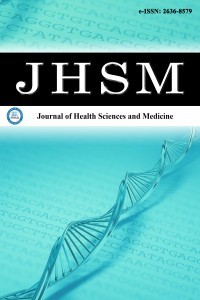1.
World Health Organization (WHO). Diabetes. World Health Organization. Published May 4, 2023. Accessed February 29, 2024. https://www.who.int/news-room/fact-sheets/detail/diabetes
2.
Ogurtsova K, Da Rocha Fernandes JD, Huang Y, et al. IDF diabetes atlas: global estimates for the prevalence of diabetes for 2015 and 2040. <em>Diabetes Res Clin Pract</em>. 2017;128:40-50.
3.
Early treatment diabetic retinopathy study research group. Grading diabetic retinopathy from stereoscopic color fundus photographs-an extension of the modified airlie house classification. ETDRS report number 10. Early treatment diabetic retinopathy study research group. <em>Ophthalmology</em>. 1991;98(5 Suppl):786-806.
4.
Steinmetz JD, Bourne RRA, Briant PS, et al. Causes of blindness and vision impairment in 2020 and trends over 30 years, and prevalence of avoidable blindness in relation to VISION 2020: the right to Sight: an analysis for the global burden of disease study. <em>Lancet Glob Health</em>. 2021;9(2):144-160.
5.
Aiello LP, Gardner TW, King GL, et al. Diabetic retinopathy. <em>Diabetes Care</em>. 1998;21(1):143-156.
6.
Wong TY, Sabanayagam C. Strategies to tackle the global burden of diabetic retinopathy: from epidemiology to artificial intelligence. <em>Ophthalmologica</em>. 2020;243(1):9-20.
7.
Sloan FA, Grossman DS, Lee PP. Effects of receipt of guideline-recommended care on onset of diabetic retinopathy and its progression. <em>Ophthalmology</em>. 2009;116(8):1515-1521.
8.
The diabetic retinopathy study research group. Indications for photocoagulation treatment of diabetic retinopathy: diabetic retinopathy study report no. 14. <em>Int Ophthalmol Clin.</em> 1987;27(4): 239-253.
9.
Teo ZL, Tham YC, Yu M, Cheng CY, Wong TY, Sabanayagam C. Do we have enough ophthalmologists to manage vision-threatening diabetic retinopathy? A global perspective. <em>Eye (Lond)</em>. 2020;34(7):1255-1261.
10.
Liu L, Wang M, Li G, Wang Q. Construction of predictive model for type 2 diabetic retinopathy based on extreme learning machine. <em>Diabetes Metab Syndr Obes</em>. 2022;15:2607-2617.
11.
Ogunyemi OI, Gandhi M, Lee M, et al. Detecting diabetic retinopathy through machine learning on electronic health record data from an urban, safety net healthcare system. <em>JAMIA Open</em>. 2021;4(3):1-10.
12.
Saleh E, Blaszczynski J, Moreno A, et al. Learning ensemble classifiers for diabetic retinopathy assessment. <em>Artif Intell Med</em>. 2018;85:50-63.
13.
Gülkesen KH, Ülgü MM, Mutlu B, et al. Machine learning for prediction of glycemic control in diabetes mellitus. <em>Mendeley Data</em>; 2022. doi: 10.17632/rr4rzzrjfc.2
14.
The pandas development team. pandas-dev/pandas: pandas (v2.0.2). Zenodo; 2023. doi: 10.5281/zenodo.7979740
15.
McKinney W. Data structures for statistical computing in python. In: Van Der Walt S, Millman J, eds. <em>Proceedings of the 9<sup>th</sup> </em>Python in Science Conference; 2010:56-61.
16.
Pedregosa F, Varoquaux G, Gramfort A, et al. Scikit-learn: machine learning in python. <em>J Mach Learn Res</em>. 2011;12(85):2825-2830.
17.
Lundberg SM, Lee SI. A Unified approach to interpreting model predictions. In: Guyon I, Luxburg U Von, Bengio S, et al., eds. Advances in neural information processing systems 30. Curran Associates, Inc.;2017.
18.
Hunter JD. Matplotlib: a 2D graphics environment. <em>Comput Sci Eng</em>. 2007;9(3):90-95.
19.
Gulshan V, Peng L, Coram M, et al. Development and validation of a deep learning algorithm for detection of diabetic retinopathy in retinal fundus photographs. <em>JAMA</em>. 2016;316(22):2402-2410.
20.
Alabdulwahhab KM. Senile cataract in patients with diabetes with and without diabetic retinopathy: a community-based comparative study. <em>J Epidemiol Glob Health</em>. 2022;12(1):56-63.

